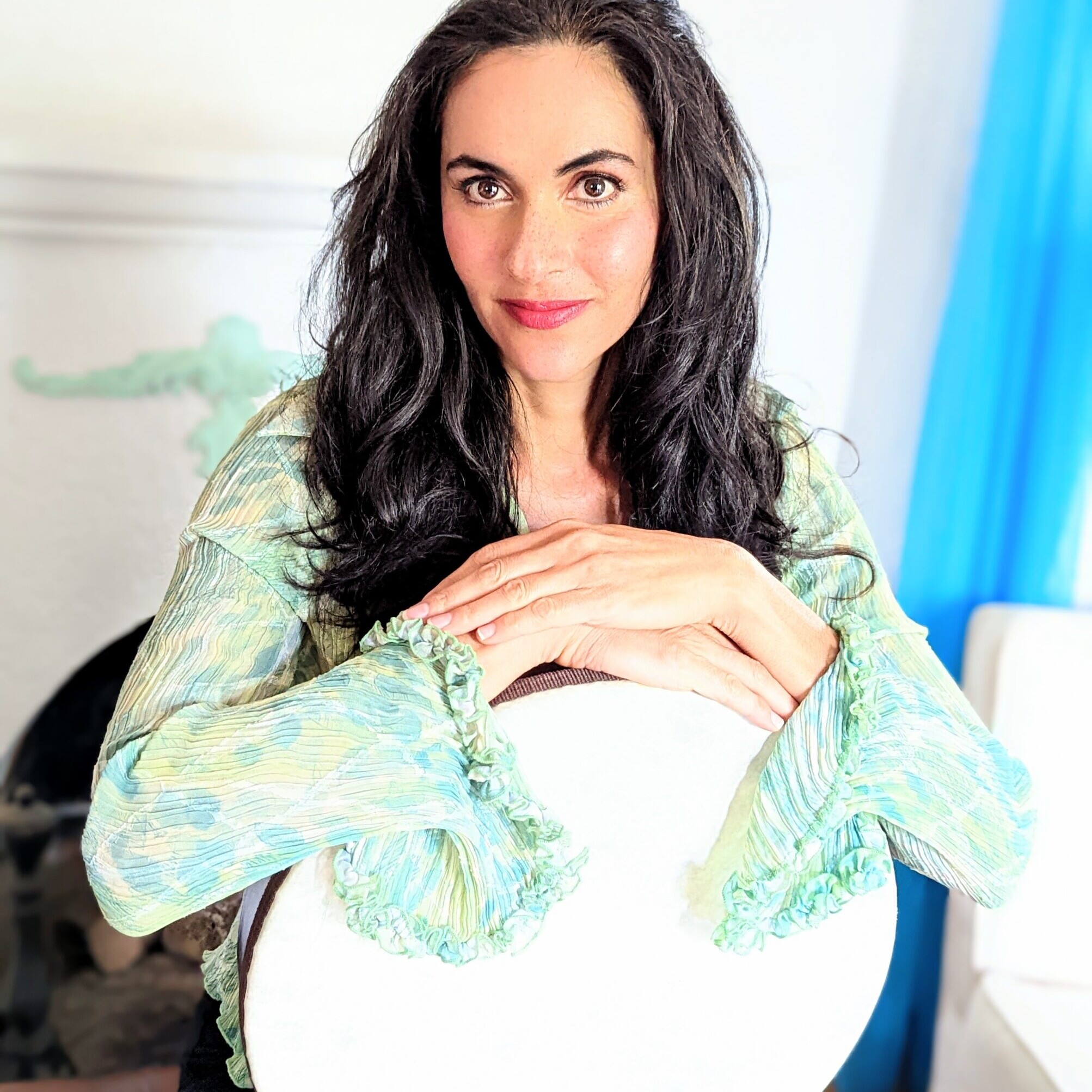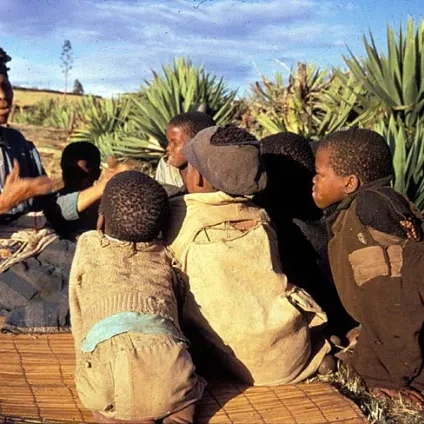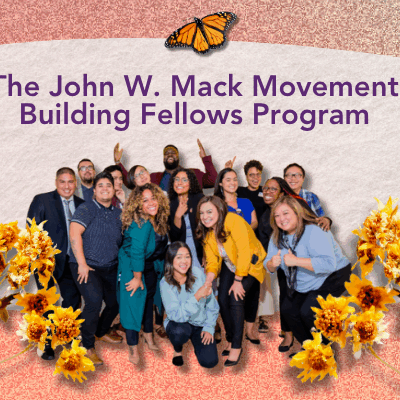by Ari Honovar
Ari Honovar’s reflections on the connection between art, joy and preserving humanity is part of Network Weaver’s BIPOC Editorial series. Learn more about the series and our submissions guidelines here. We invite you to connect with us at [email protected]
For millennia, Indigenous cultures have embraced joy-driven artistic practices, intuitively understanding their profound impact on human wellbeing. Dance, song, storytelling, poetry, and visual arts have been passed down through generations, cultivating joy, cohesion, and a sense of shared purpose. Only now is science beginning to catch up, revealing the deep connection between art and joy and their vital role in preserving humanity. Research shows that activities like singing, dancing, and creating engage the parasympathetic nervous system, which helps regulate stress responses. These activities also reduce anxiety and depression, boost the immune system, speed trauma recovery, and even contribute to longevity. Beyond health benefits, these practices serve as powerful means for healing the harm caused by systemic oppression and dehumanization. This process, known as reparative rehumanization, restores dignity, cultural identity, and relational well-being to individuals and communities. Through nurturing and uplifting expressions like art, dance, and music, we can reclaim our humanity and rebuild bonds that trauma has fractured.
Musical Ambassadors of Peace
Musical Ambassadors of Peace was formed right after the Iraq invasion to “offer participatory music and movement programs that build cross-cultural bridges, honor and preserve indigenous musical traditions, and offer emotional support to vulnerable populations, especially those who have experienced the trauma of war or displacement.” As the Iranian Musical Ambassador of Peace, I facilitate Resilience through Joy sessions for refugees. In these sessions, we stabilize our nervous systems through dance and play, allowing participants to become more embodied and to connect deeply with themselves and others. Shelter directors tell us that the positive effects of our gatherings, including increased collaboration, last for several days. Having facilitated thousands of sessions, I’ve learned that what’s good for traumatized refugees is good for all of us. Sessions with frontline workers, asylum attorneys, and social justice advocates, who face vicarious trauma daily, have reaffirmed that prioritizing joy, fostering relationships, and engaging in reparative rehumanization are crucial in today’s world.
Communal Art as Reparative Rehumanization
There is good reason why people in some of the world’s most dangerous regions risk their lives to engage in creative expression as an act of resistance. During apartheid, South African poets and musicians kept their culture alive, expressing defiance through verse and song when their voices were silenced. This act of creation itself becomes reparative rehumanization.
Throughout months of incessant slaughter in Gaza, Musical Ambassador Rahaf Shamaly and her band sang indigenous Palestinian songs with displaced children. The children told her they were afraid of being bombed and singing together allowed them to experience grounding, joy, and respite from the constant terror. With donors’ help, Shamaly was evacuated but her family is still living amid the genocide in Gaza. Another practitioner, Bashar Al-Bilbisi, the director of the Al-Fursan Arts Ensemble continues to teach dabke, an Indigenous Palestinian dance, to children in Gaza, even after being repeatedly displaced by airstrikes. In Ugandan refugee camps, Musical Ambassador Abaho Conrad, a Rwandan genocide survivor, dances with rescued Congolese child soldiers. These practitioners share videos of children practicing ancestral songs and dances, preserving their connection to heritage and roots. They tell me that reconnecting to joy restores dignity and shared humanity, healing the disconnection caused by trauma. My own journey began as a child growing up in war and oppression in Iran, where music and dance were outlawed. My family and friends had to find creative ways to bring joy into our lives. We danced and played music in secret and wrote anti-regime graffiti on white walls. As children, we intuitively knew what neuroscience is now confirming: joy isn’t a luxury—it’s essential for survival.
Workplace Dehumanization
It’s no secret that we live in a world where the dehumanization of people in the workplace has become normalized, evident in terms like “human capital” and “labor units”—and in actions that favor profit over people. Prevailing systems compel us to fall in line, turning transactional interactions into the norm while genuine relationships are neglected. As a result, we become accustomed to dehumanizing ourselves and each other. Reintroducing joy and creativity into these environments allows us to reclaim what has been lost—our humanity. The joy that prioritizing relationships brings becomes an antidote to the dehumanization of labor. We begin to view systems and structures through the lens of honoring relationships, with the ease and fulfillment they deserve. There is no reason work can’t be a space for connection and joy—where focusing on productivity without considering wellbeing becomes unthinkable.
Reimagining Our World
When we recognize joy as renewable fuel rather than a fleeting emotion, we start to weave it into our daily lives. Engaging in communal artistic expression, laughter, and play helps us feel supported, amplifying both personal and shared joy. This process helps dissolve hierarchies and break down barriers, nurturing a sense of belonging and reclaiming our humanity. This reclamation is essential not only for those facing stress and trauma but for society as a whole. The rehumanizing power of sharing joy enables communities to rebuild trust and safety, transforming our living and work spaces into environments where individuals thrive.
A simple yet effective way to pave the way for a joyful self and a robust community is to gauge and replenish our body budget. The term body budget was coined by neuroscientist Lisa Feldman Barrett and refers to the brain’s job as the body’s inner accountant. The brain constantly tracks and predicts the body’s energy expenditures, balancing deposits (like nutrients, oxygen, and rest) and withdrawals (like physical activity and stress responses) to maintain homeostasis and support overall wellbeing.
We can make the inner accountant’s job easier by adjusting certain habits and tuning into our body budget several times a day. When the body budget is flush—thanks to generous deposits such as sufficient sleep, nutritious food, good health, and regular movement—we are better equipped to handle life’s withdrawals, such as disagreements, illness, setbacks, and stressful situations. So why not bring this useful language into our chats with loved ones, work meetings, and communities and begin each task or event with a check-in on our body budget? If our reserves are low, we can collectively acknowledge the need for self-care, allowing time to replenish before taking on more. Prioritizing this replenishment is a profoundly rehumanizing act that pays dividends, often bringing about feelings of joy, gratitude, and abundance. Cultivating these states initiates a positive feedback loop where honoring our body budget fuels greater creativity, cooperation, and health, which in turn replenishes us and our relationships further. Over time, this process reshapes our inner landscapes and transforms our worldviews and connections. And as more of us embrace reparative rehumanization, together we create a culture of joyful accountability that strengthens our communities and contributes to a more compassionate, just society.

Ari Honovar
Ari Honarvar is the founder of Rumi with a View, dedicated to building bridges between the arts, social justice, and wellbeing. She is a Musical Ambassador of Peace who dances with refugees and facilitates Resilience through Joy workshops on both sides of the U.S.-Mexico border. Her work has been featured in TEDx, CNN Español, Teen Vogue, NPR, and elsewhere. Ari is the author of the critically acclaimed novel A Girl Called Rumi inspired by her war-torn childhood, and the bestselling oracle deck, Rumi’s Gift.
What inspired you to write this particular piece?
My inspiration came from a lifelong journey of witnessing and experiencing the transformative power of joy and creative expression in the face of adversity. Growing up in Iran under oppressive conditions, where music and dance were outlawed, I saw firsthand how joy-driven practices became acts of resistance and resilience. This foundation and my work as a Musical Ambassador of Peace demonstrated how reparative rehumanization—restoring dignity, connection, and shared humanity through joy—can heal trauma and rebuild fractured bonds. The intersection of ancient wisdom and modern neuroscience also fueled my drive to write about joy as an essential tool for both personal and communal healing.
What does liberation mean to you?
Liberation, for me, is the process of reclaiming our humanity, dignity, and connection to ourselves, each other, and the world around us. It is the freedom of expression and movement while honoring the impact of our actions on our internal and external relationships. True liberation dismantles systems of dehumanization and coercion, replacing them with practices that prioritize wellbeing, belonging, and collective thriving. It is about healing from trauma and injustice through joy, creativity, and connection, fostering a world where survival is no longer the goal and flourishing is the norm.
featured image found at Rumi With A View

Network Weaver is dedicated to offering free content to all – in support of equity, justice and transformation for all.
We appreciate your support!



